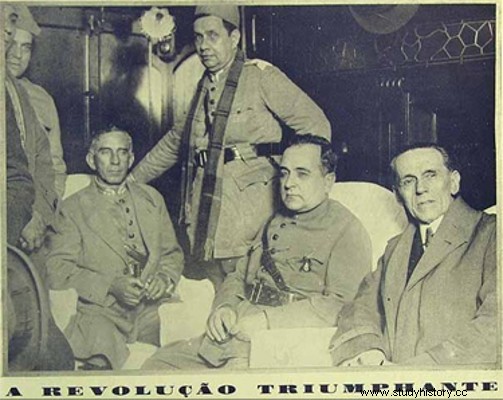
The so-called Era Vargas it profoundly marked the structure of the Brazilian State and society in the 20th century, mainly due to the impetus given to modernization with industrialization and the efforts towards state management based on scientific administration. However, the organization of this modernization generates controversy among historians. For some, the Vargas Era is part of the so-called populism. For others, varguism It is one of the branches of fascism. The purpose of the text is to present the elements that generated this controversy.
The Vargas Era is divided into phases between the 1930s and the death of Getúlio, in 1954. provisional government, between 1930 and 1934, two constitutional governments, between 1934 and 1937 and 1951 and 1954, and, finally, the Estado Novo, between 1937 and 1945. The phases are related to the economic and political arrangements made between the capitalist social classes Brazilians, which allowed Vargas to remain in power at this time. In the text, the interest will focus on the Estado Novo dictatorship, as it was the most important period.
The Estado Novo was characterized by the constitution of a centralized and anti-liberal State, suppressing parliament and creating instances of corporatism. The suppression of parliament was justified by the drafter of the 1937 Constitution, Francisco Campos, because technical issues were the parameters necessary for decision-making, relegating political action as an obstacle to the modernization of society. Technical bodies would present solutions for the dictator to make the decisions. This strengthened the centralizing role of the State, mainly through the mechanism of corporatism, articulating the state administration, business associations and bodies that control the workforce, such as unions. In this way, the dictator Vargas could harmonize social interests for the good of the nation.
This organization of state and society was influenced by the Polish (the constitution was nicknamed Polish) and Italian fascist regimes, through the Carta del Lavoro . In addition to public declarations of admiration for the social leadership exercised by the governments of Benito Mussolini, in Italy, and Adolf Hitler, in Germany, approaching the Axis at the beginning of World War II, the Estado Novo resembled them in supporting the movement. union. This measure allowed Vargas to present himself as a defender of workers, while at the same time repressing the activities of labor organizations that escaped this same control.
As the Brazilian national bourgeoisie was incapable of driving industrialization by itself, it was necessary for the Estado Novo to fulfill this role, the only institution capable of making the necessary investments to create conditions for industrial production, mainly in the area of energy and basic industries. These measures were carried out by a technocracy formed mainly in the Brazilian army, which also modernized the state administrative structure, using scientific management methods to undermine personal political influences in the various Brazilian regions.
The definition that this regime is populist is based on the fact that there was no single party in Brazil that linked the supposed interests of the nation to the State, that there was no vision of history that legitimized the government and that the violence used was not as intense as in Europe.
On the other hand, the fascist definition given to the Estado Novo may be supported by what is exposed by the Portuguese historian João Bernardo, in his book Labyrinths of Fascism. For him, fascism it was the revolt within the order . Vargas could fit into this definition mainly because of his role in the 1930 revolution (the revolt) and in maintaining the interests of the capitalist classes (the order), such as the coffee oligarchy and the industrial bourgeoisie, against which he had rebelled, supported by military forces. It is also the military hierarchical disciplinary structure itself that will shape the structure of the Estado Novo and strengthen the nationalist and patriotic discourse, transforming the State and the army into the institutions of unity and identity of the Brazilian nation.
The debate on the populist or fascist character of Vargas is still open, the existing certainty is that it was a conservative and repressive action for the modernization of Brazilian society.
Take the opportunity to check out our video lessons related to the subject:
